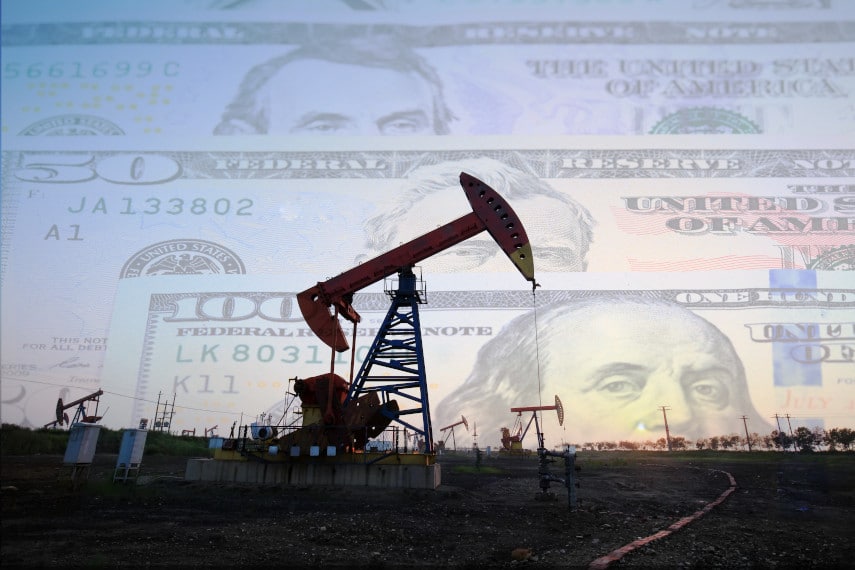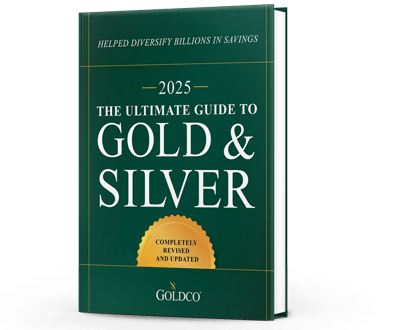6 Indicators of a Potential Recession
It seems that in the media today there are more and more mentions of the dreaded R-word: recession With growing economic uncertainty, the threat of potential recession seems to be growing as...
Economy

Everyone today knows that the US dollar is the world’s reserve currency. More dollars are held as foreign exchange reserves than any other currency in the world, and more international transactions are made with dollars than with any other currency. It has been that way since the end of World War II, but few people know exactly why.
In the aftermath of World War II, the Bretton Woods system arranged for the US dollar to become the world’s reserve currency. This was to replace the gold standard with a pseudo-gold standard, the US dollar standard. Exchange rates were to be fixed, able to trade only in very narrow bands, and the US dollar was to become the world’s reserve currency, fully redeemable in gold.
As with many monetary standards, the temptation on the part of the currency issuer to cheat became insurmountable. The US government, through the Federal Reserve, created far more dollars than it had gold backing. That resulted in a weaker dollar and stronger foreign currencies, forcing other countries to have to periodically revalue their currencies.
The weaker dollar also benefited US exporters, whose products were now cheaper abroad, and harmed foreign exporting countries, whose goods were now more expensive in dollars in the US. Eventually European countries got wise to this and began to exchange their dollars for gold.
US gold holdings began to decline, and by the 1960s gold outflows had grown so large that there was a real risk that the US would run out of gold. World gold markets also realized what was going on, and market prices of gold began to rise above the officially valued $35 per ounce figure.
Various schemes were undertaken to try to suppress gold prices, but without success. Eventually President Nixon decided to close the gold window in August 1971, bringing an end to the dollar’s official convertibility into gold. From then on, the dollar and other currencies were free to float on international markets.
But even though the Bretton Woods system came to an end then, the dollar remained the world’s reserve currency, and has for the past 50-plus years. That is in large part due to the petrodollar system that has developed since then.
The petrodollar system relies on the fact that purchases of oil are among the largest foreign exchange transactions that countries engage in today. Oil is an absolute necessity for modern industry, and every country in the world requires oil to operate. And today most oil producing nations accept only dollars for their oil.
This system developed as a result of Arab oil-producing nations agreeing to accept only dollars for oil. They then built up surpluses of dollars which they couldn’t use internally. Those dollars were used to purchase US military equipment, contract US companies to help build infrastructure projects, or were used to purchase US Treasury debt. And because Arab countries would only accept dollars, every country that wanted to purchase oil on international markets had to build up supplies of dollars.
That boosted international demand for the US dollar and cemented the dollar’s status as the world’s reserve currency. But that system is predicated on the acceptance of dollars for oil. And if oil producing nations decided to stop accepting dollars, or decide to accept currencies other than the dollar, the whole system could begin to erode, and the dollar could eventually be dethroned as the world’s reserve currency.
Fast forward to today, where a great number of countries have grown tired of the US dollar’s continued weakness and are looking to alternatives to the dollar. Among them is Saudi Arabia, which has announced that it is exploring the possibility of engaging in yuan-denominated oil sales with China.
Saudi Arabia is upset with the US for a number of reasons, including lack of support for Saudi military action in Yemen, and the Biden administration’s attempts to agree to another nuclear deal with Iran. And while talks between Saudi Arabia and China have been ongoing for years, there’s a very real possibility that this could be the year that they finally come to fruition.
This would not only be a major feather in China’s cap as far as further internationalization of the yuan goes, it would also be a major slap in the face for the US dollar. It would enhance the possibility that other oil producers might also accept the yuan for oil purchases, and could lead to increased demand for the yuan from other countries that currently use the dollar.
If this move were to take effect, it could signal the beginning of the end of the petrodollar system, and with it the dollar’s status as the world’s reserve currency. The dollar’s demise won’t happen overnight, but it could happen slowly over the next several years or decades, just as the dollar slowly replaced the pound sterling in the early 20th century.
For US investors, the dollar’s demise could bring with it the end of an era of prosperity, or destroy the facade of apparent prosperity. The US dollar has benefited from the existence of the petrodollar system and the demand it stimulates for both US dollars and US Treasury debt. If the petrodollar system comes to an end, it would be time to pay the piper, and that could be bad news for investors.
One of the primary impacts to investors could be decreased worldwide demand for US Treasury securities, which right now are seen as just about the safest investments there are. If countries were to pivot to the yuan, and therefore towards yuan-denominated securities, demand for US Treasuries could drop. That would lead to decreased value of US Treasury debt, harming investors who hold that debt.
Since investors are often cautioned to lessen the risk profile of their investments as they near retirement age, switching from stocks to bonds, many retirees and those nearing retirement end up holding a relatively large portion of their assets in the form of Treasury securities. If the dollar loses its status as the world’s reserve currency, those investors could see the value of their Treasury holdings decrease.
Decreased demand for the dollar could also reduce demand for other dollar-denominated financial assets, such as US stocks, leading them to decline in value too. In short, any assets you hold that rely on the strength of US dollar demand to prop up their value could be impacted negatively.
One way that could forestall that happening to you is to diversify your portfolio into assets that don’t rely on the strength of the dollar for their value. Among them are precious metals like gold and silver.
Gold and silver markets are international, and while prices in the US are denominated in dollars, prices elsewhere are denominated in local currencies. These precious metals are the closest thing to an international commodity standard that exists today, and their near-universal demand makes them an ideal hedge against the types of market gyrations that occur as a result of inflation, currency devaluation, etc.
Gold and silver are also relatively easy to invest in, with numerous products and investment vehicles available to suit everyone’s needs or risk appetite. If you have retirement savings in tax-advantaged retirement accounts such as a 401(k), 403(b), IRA, TSP, or similar account, you can even roll over or transfer your existing retirement savings into a gold IRA or silver IRA tax-free.
That allows you to protect your existing retirement savings by owning gold or silver, while still enjoying the same tax advantages as your current retirement accounts. And when you decide to take a distribution from your account, you can take that distribution in cash or in precious metals, allowing you to continue benefiting from owning gold and silver even after you take distributions or are required to take required minimum distributions (RMDs).
If you’re looking to future-proof your portfolio with gold and silver, talk to the precious metals experts at Goldco today. With over a decade of experience helping people just like you benefit from owning gold and silver, our representatives are ready to answer any questions you have about gold and silver and help you protect your hard-earned retirement savings with precious metals.

